JOURNEYS OF DISCOVERY
Professor Sir Steve Jackson on how his research led to a life-saving cancer drug
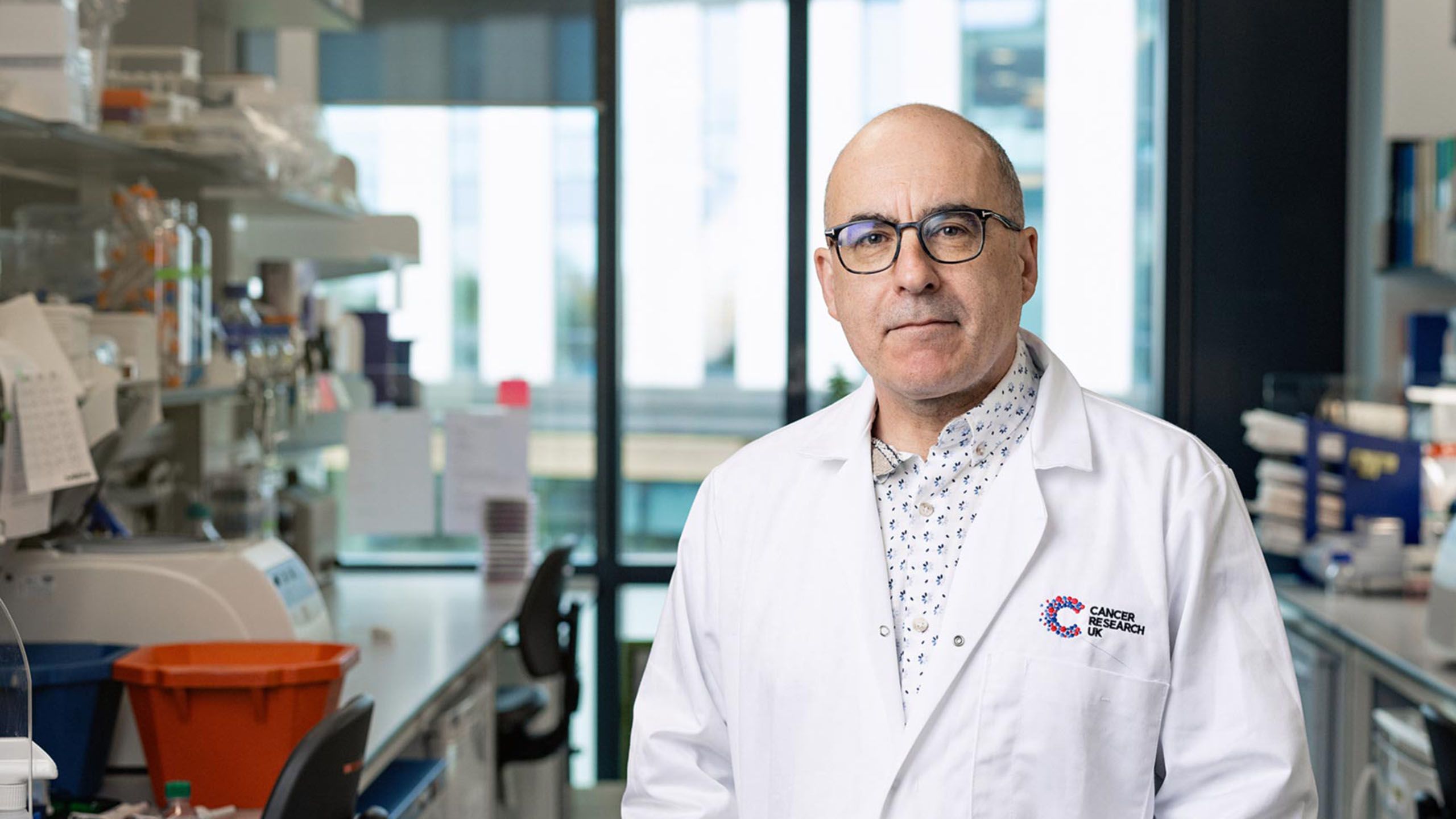
The drug olaparib has now been used to treat over 140,000 patients globally, changing the outlook for people with breast, ovarian, prostate and pancreatic cancers.
We talk to Professor Sir Steve Jackson about chance, risk, curiosity and shots-on-goal in the journey of his discovery.
Steve admits he can be a bit evangelical about DNA repair.
For the past 35 years in Cambridge, he and his team have explored how our cells are able to deal with damage to our DNA.
Thanks to his and others' work we now know that an orchestrated network of ‘molecular police’ patrol, recognise and repair mistakes in our DNA caused either by accident or by agents like UV light or carcinogens. DNA repair keeps our genetic material intact so that it can carry on encoding the functions necessary for life.
But Steve's fundamental curiosity about the nitty-gritty of DNA repair also led him in what he describes as “wonderfully unforeseen directions”.
After a chance observation and a leap of thinking, he realised that it was possible to switch off certain DNA repair mechanisms in cancer cells, causing them to die, while normal cells “just shrugged their shoulders and carried on growing and dividing”.
This led to him setting up a team of scientists in 1999 that created olaparib, a new class of cancer drug, which has now been used to treat over 140,000 patients globally. One of these patients is Jackie van Bochoven.
Jackie’s story
Jackie was diagnosed with BRCA1 breast cancer in February 2019. She was having yearly mammograms because of her family history of cancer and her tumour was caught early. But, although it was small, the cancer was very aggressive. She tells us what happened next:
“When I had the diagnosis, I was shocked and numb. There were so many things going through my head. I thought about my children. And I thought about my mum and my sister who had both been diagnosed with breast cancer.
After the initial biopsy, I met Professor Jean Abraham at Addenbrooke's Hospital in Cambridge and she thought I was a good candidate for a new trial for breast cancer involving a combination of chemotherapy and olaparib.
I felt it was a fantastic opportunity. I was thinking about my family and future generations. I felt it was important to be part of the trial.
Five years on, I've just found out this week [April 2024] that the trial’s been very successful. I’m back at work. I’m enjoying life. The trial has made a huge difference, and the success rate has been really positive for me. I'm taking every day as it comes and taking every opportunity that I can.”
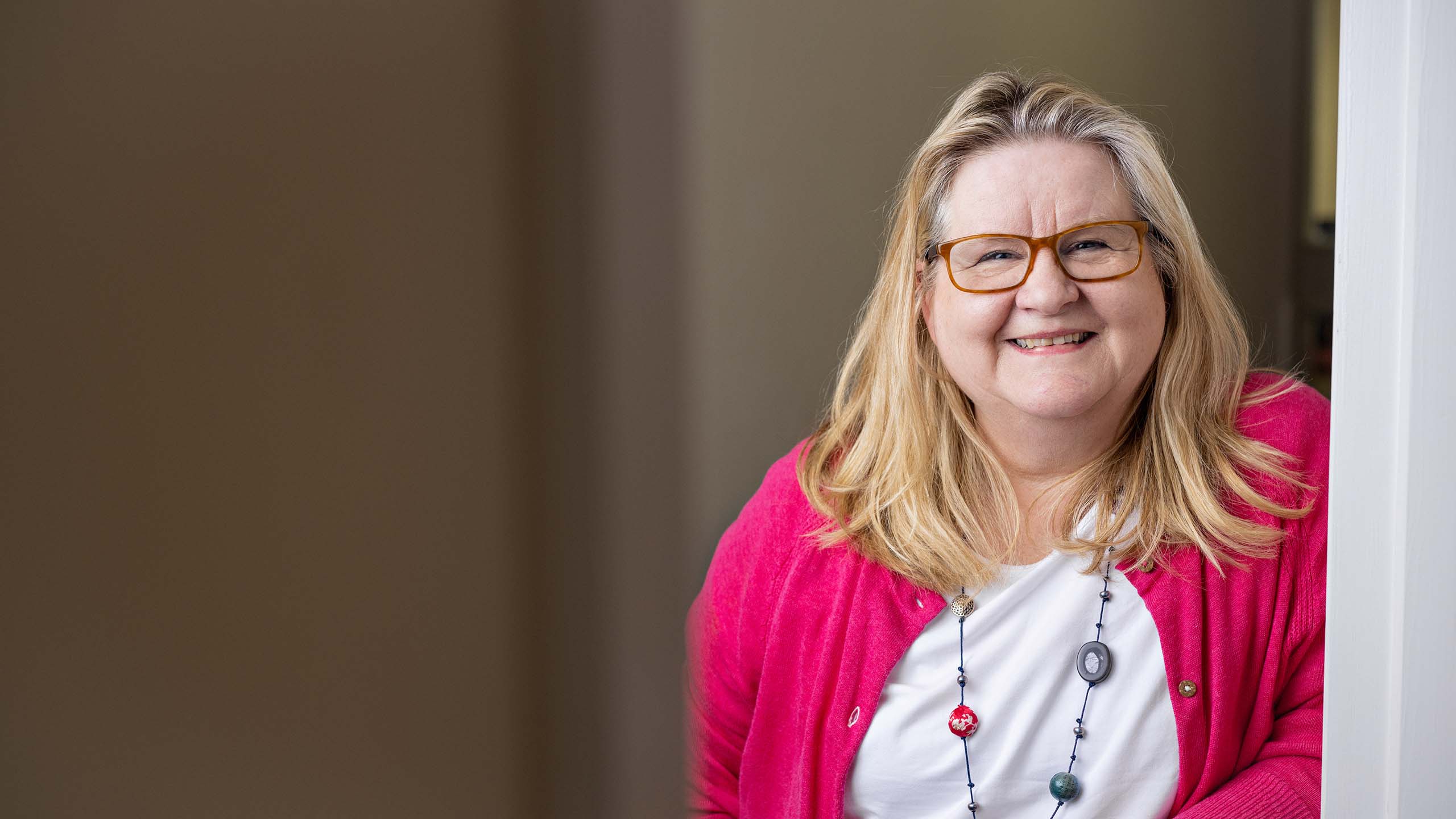
Steve’s story
What excites Steve is understanding how biology works and why it sometimes goes wrong. But what galvanises him, he says, is knowing there are people alive today as a result of his “counterintuitive” discovery of how to create a cancer drug:
I’m a scientist so I haven’t tended to come into contact with patients who my work has helped. But it’s such a privilege when I have. One lady I met a few years ago stays in my mind. Her ovarian cancer had returned and she was offered olaparib as part of a trial. She described how frightening it was to be trying something so new but felt it was her only hope. The drug worked and when we met, she had no signs of the cancer.
She said that I’d given her life back to her. I don’t tend to think of myself as a lifesaver but it’s probably no surprise that I consider the development of olaparib as the most meaningful outcome in my career so far.
When I started out as an independent group leader in Cambridge, nearly everything my group touched seemed to turn to gold. And then a reviewer’s comment made me stop and think. I had brilliant people in my lab at the Gurdon Institute, where I was based when I moved to Cambridge in 1991. We were working in new areas, studying how genes are transcribed into RNA to make proteins and we also had first insights into other cellular processes. We had a brilliant review from our funders at the end of the first five years, but one of the comments questioned whether it was relevant for cancer patients.
I was concerned that great research on its own might not be fundable. We needed to find translational opportunities that would potentially benefit patients.
Meanwhile I'd stumbled across something new and interesting: an enzyme that was activated by breaks in DNA. It took a little time for the penny to drop but, when it did, I realised that something activated by broken DNA is probably involved in DNA repair. The enzyme was part of a ‘molecular police force’ that patrols, spots damage and triggers the fixing processes.
“My Eureka moments?
A counterintuitive idea and a late-night conversation in a bar.”
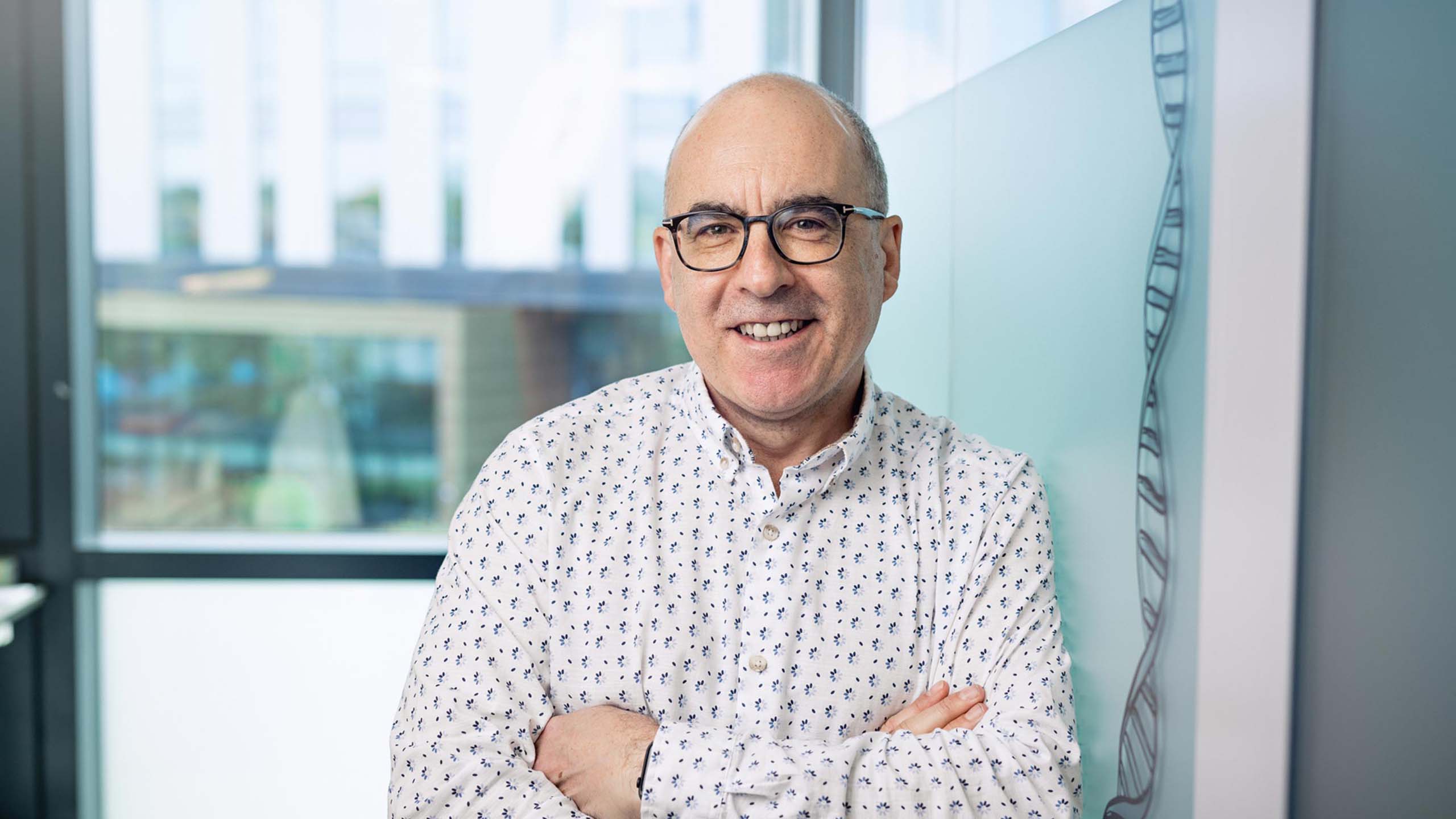
This started cogs whirring in my brain. I knew that radiation and chemotherapies kill cancer cells by generating DNA damage. Could we make drugs that stop the molecular police from repairing the damage?
I couldn't get people to buy into the idea... why would you want to inhibit DNA repair? We need DNA repair. It was counterintuitive to think about knocking it out.
One of the great things about Cambridge is that there are lots of examples of very successful biotech start-ups. I thought, if they can do it, why can't I? And that's the story of KuDOS, the company I set up in 1997. I was a young professor in Cambridge and the science was new, but a small set of venture capital groups had the confidence to back me in my ideas. Crucially I also had the support of my funders (the predecessors of Cancer Research UK) and the Tech Transfer Office (now Cambridge Enterprise).
The game plan was to go all-out and develop drugs against DNA repair enzymes, including against a protein family called poly ADP-ribose polymerase (PARP) which we knew helped repair broken DNA. Out of this programme came olaparib, a potent PARP inhibitor.
“There’s something about the environment here in Cambridge that not only creates great science. It also really nurtures people and connections.”
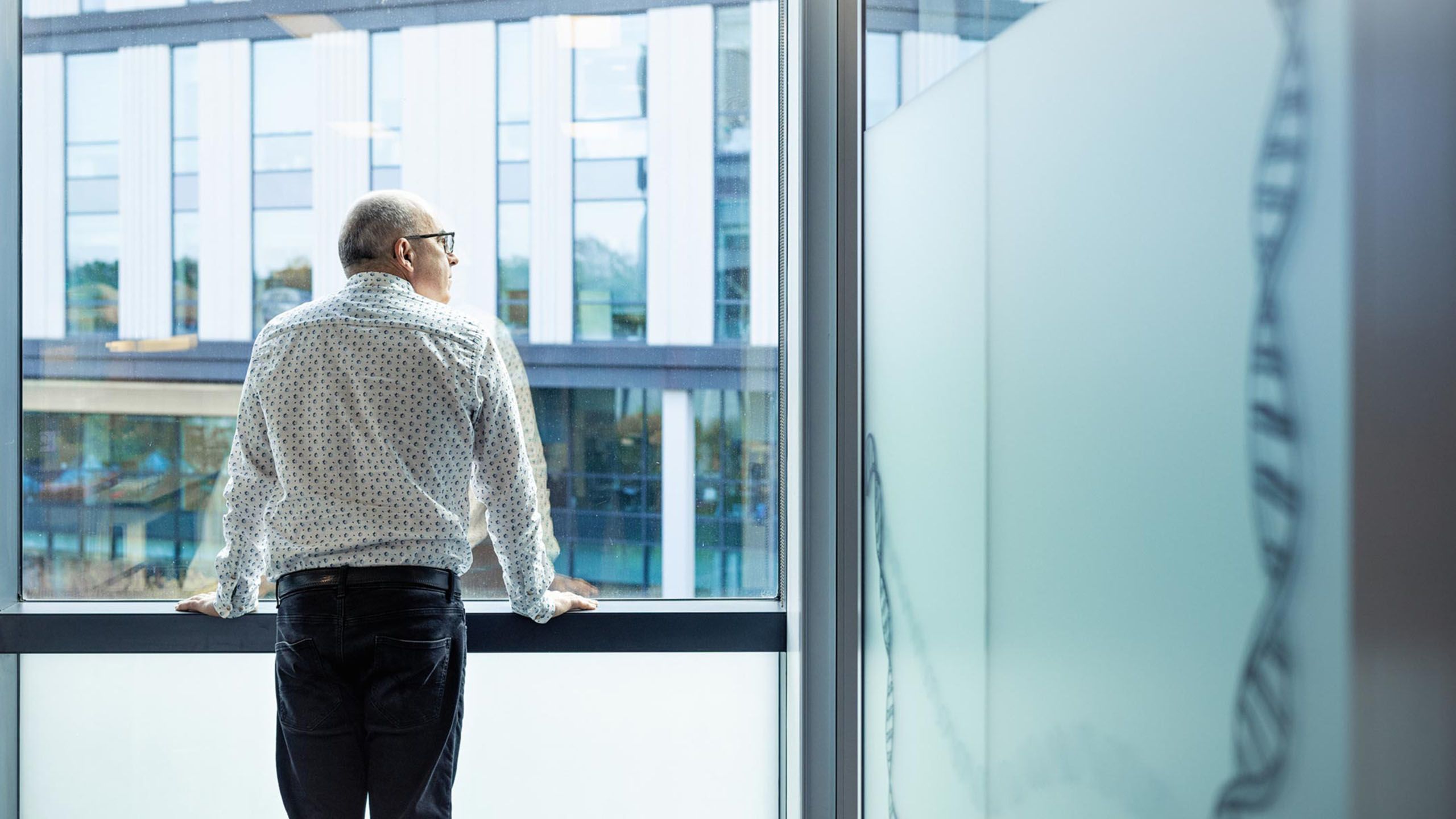
And then came the second Eureka moment. I was at a conference in a late night bar talking to Professor Alan Ashworth who at the time was at the Institute for Cancer Research in London. He was working on cells with mutations in genes called BRCA1 and BRCA2, which commonly occur in people with cancer.
DNA repair is so important to our survival that we have evolved a backup mechanism in case PARP fails. One such process is called homologous recombination and it involves DNA being exchanged between identical pieces of DNA to repair it.
Alan and others had figured out that BRCA1 and BRCA2 are very important for homologous recombination. We speculated that if you block the PARP repair mechanism in people with cancers caused by BRCA1/2 defects, their healthy cells might revert to their backup and survive but, because the tumour cells have no BRCA1 or 2, they may have no backup and so would die. This is exactly what scientists in our groups found.
This was the answer. It meant that the PARP inhibitors that KuDOS had developed could be used to treat patients who had BRCA1/2-mutated cancers. Sure enough, when we tested this, the BRCA-deficient cells dropped dead when you gave them a PARP inhibitor at concentrations where normal cells just shrugged their shoulders and carried on growing and dividing.
We published our work in the journal Nature in 2005. It took us almost 18 months to get it through the reviewers. It wasn’t that they didn’t believe it. They were saying – at least for a while – was this really all that exciting and interesting?
Meanwhile, work was moving fast at KuDOS. Olaparib had already gone into healthy volunteers. The next stages of clinical trials were going to be very expensive. The best way forward would be either to partner with a pharmaceutical company to share the risk and share the benefit, or to be acquired by a pharma company, which is what we did. AstraZeneca bought KuDOS in 2006 for $210m.
“I consider olaparib as the most meaningful outcome in my career so far.”
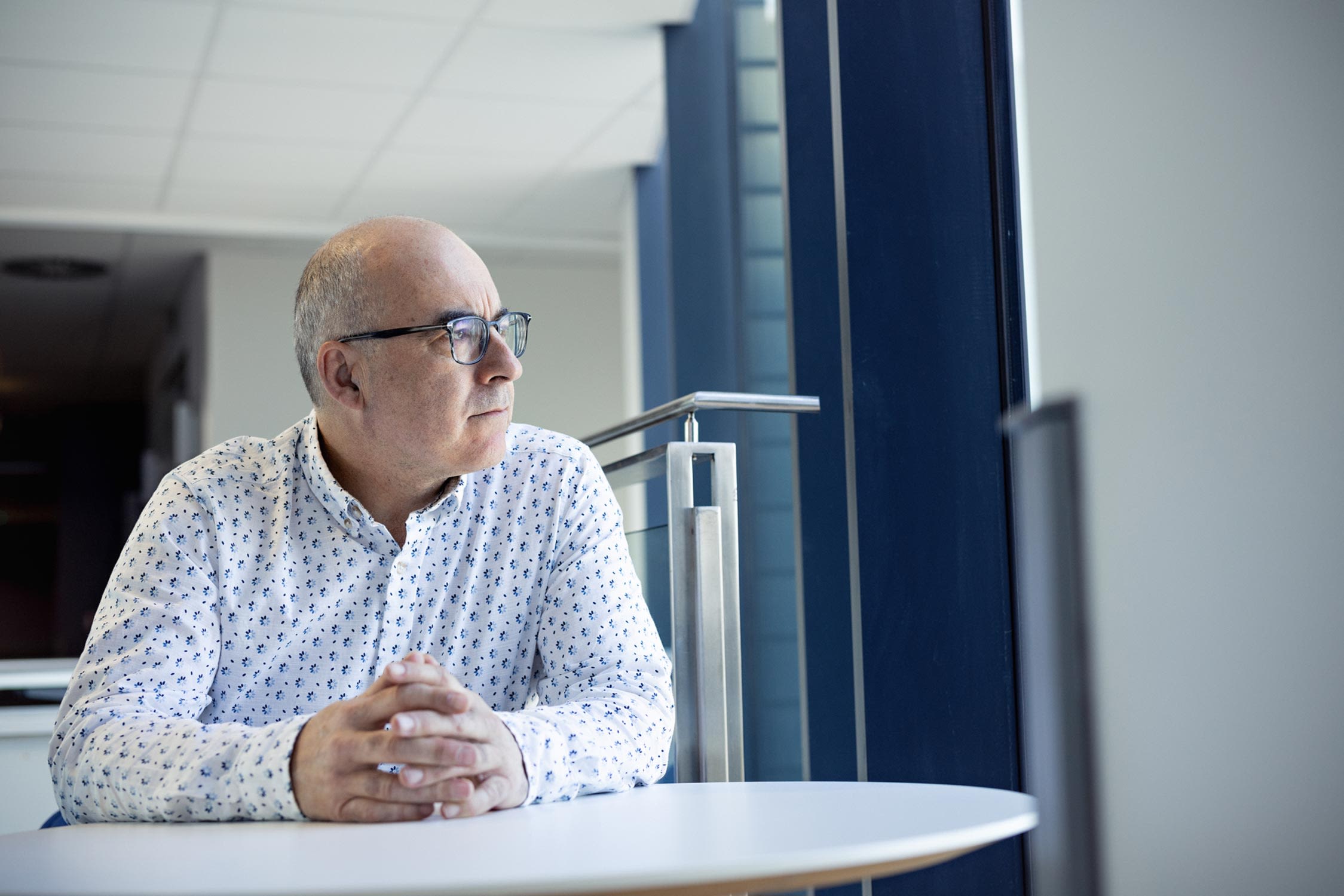
This year marks 10 years since the European Commission granted approval for olaparib, marketed as Lynparza (the trade-name of olaparib) by AstraZeneca, to treat ovarian cancer patients who have BRCA1 or BRCA2 mutations. The drug has been jointly developed and commercialised by AstraZeneca and MSD, and is now approved in several countries across multiple tumour types including forms of breast cancer, pancreatic cancer and prostate cancer.
Then, in 2023, the NHS agreed a deal to roll-out the drug to treat advanced prostate cancer and a form of early breast cancer.
I’m now based at the Cancer Research UK (CRUK) Cambridge Institute, which is next door both to AstraZeneca’s European headquarters and Addenbrooke's Hospital on the Cambridge Biomedical Campus. I pass clinicians in the Institute corridor who prescribe olaparib for their patients. It’s nearly 35 years since I set up my lab in Cambridge and I oscillate between thinking the time has gone in a flash to thinking it’s been a long slog which nearly did me in!
One thing I’ve learned is that ideas need people to drive them over lines. In particular my KuDOS colleagues Niall Martin, Graeme Smith, Keith Menear and Barrie Ward, as well as Mark O’Connor who brought huge continuity to the drug’s development when he moved to AstraZeneca from KuDOS when it was acquired, and Susan Galbraith at AstraZeneca who had the insight and gravitas to allow the programme to progress. There’s something about the environment here in Cambridge that not only creates great science. It also really nurtures people and connections.
Curiosity is also hugely important. There are a great many things we don't know and many things we don't even know we don't know. The possibility of scientific discovery is what gets me out of bed in the morning.
Science is moving ever more quickly now. I’m hopeful that more of these kinds of drugs will find their way to the right patients in combinations that could be curative for some. Right now, PARP inhibitors are fairly expensive but when they fall off their patent cliff, maybe usage could go from hundreds of thousands to millions of people.
In my view, the future of cancer will also increasingly involve early diagnosis. It’s intriguing to think that, for some patients, it might be possible to take olaparib or other drugs as a preventative treatment to wipe out rogue cells before they even get a chance to become a fully grown cancer.
What’s my advice for early career researchers? Take calculated risks. It’s a shots-on-goal thing: think about the approach, understand the biology, stay curious, and when things do not work out, try again and try something different.
Professor Sir Steve Jackson works at the Cancer Research UK Cambridge Institute. His work has been funded by Cancer Research UK, Wellcome, European Union, European Research Council, Worldwide Cancer Research, the Mark Foundation for Cancer Research and other organisations.
Published:
With thanks to Jackie van Bochoven
Words: Louise Walsh
Photography: StillVision
The text in this work is licensed under a Creative Commons Attribution-NonCommercial-ShareAlike 4.0 International License
Support cancer research at Cambridge
Cambridge hosts a cancer research community responsible for globally significant breakthroughs and innovations.
Together we are changing the way cancer is treated. Our scientists will make discoveries alongside expert clinicians treating patients, drawing on the world-leading expertise found within the University and across the Cambridge Biomedical Campus.
We will find cancer earlier and treat it better. Join us.

